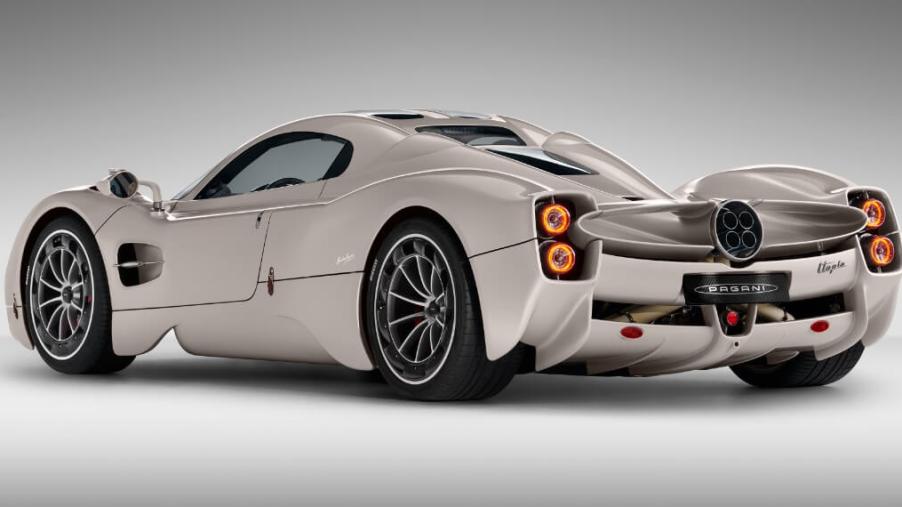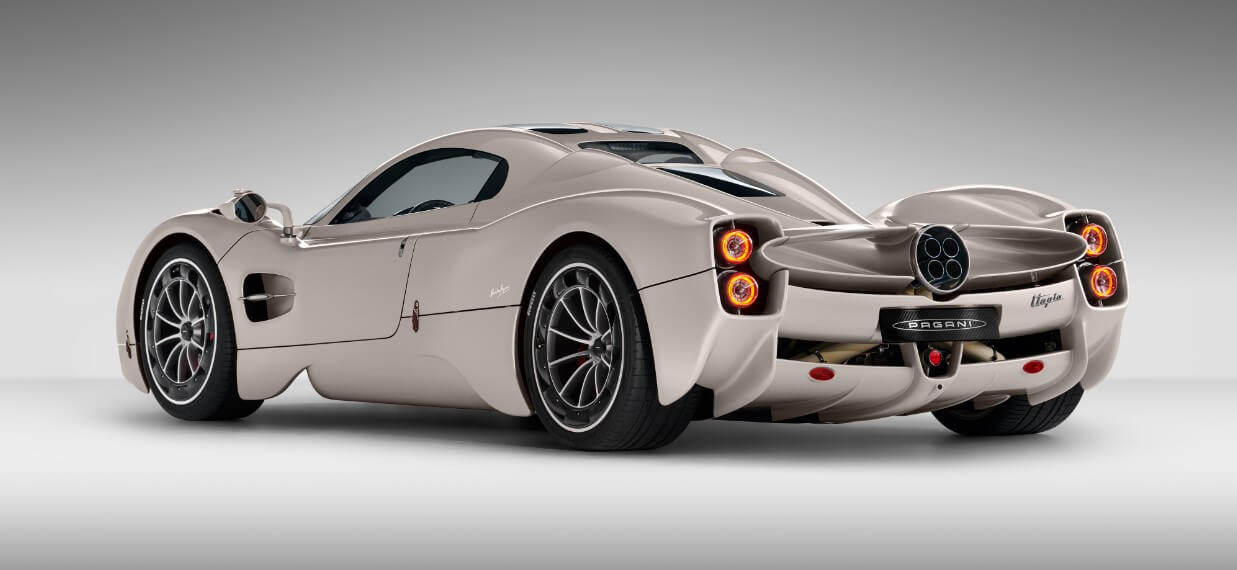
How Many Pagani Utopia Models Will Be Made?
From humble beginnings to becoming a top-rated supercar company, Pagani has become a go-to brand for the rich and famous gearheads who relish high-spirited rides in supercars. After launching the C8 project – the Zonda – and the C9 project – the Huayra – the car manufacturer is currently working on the C10 project, boldly named “Pagani Utopia.”
As its name (and the company’s reputation) suggest, the luxurious supercar is expected to be the epitome of perfection, oozing an elegant aura from its exterior styling and interior design to engine and road performance. You’ll be lucky to get your hands on this beauty, considering it’s a limited-edition car. So, what do we know about the Utopia, and how many models will ultimately be produced?
A brief history of the Pagani brand
Pagani Automobili S.p.A was established in 1992 by Horacio Pagani, an Argentine-Italian entrepreneur and automotive engineer, born on Nov. 10, 1955. The Pagani website engagingly narrates young Horacio’s propensity to reading car magazines and sketching, which gave him insights into the life and businesses of the Argentine five-time F1 winner, Juan Manuel Fangio. Through his reading, he learned that every piece of creation must be both beautiful and functional, a philosophy that would influence his entire professional life.
At only 20 years, Horacio was already caught up in the engineering bug in Argentina, where he designed and built his first car, an F3 racer. Shortly after, he landed a job at Renault to design the body of a racecar, and he seized the opportunity to showcase his talents. However, to achieve his supercar dreams, Horacio moved to Italy, where he worked at Lamborghini as a sweeper. Still, he worked his way up the ladder to become the head engineer, overseeing various projects, such as the Lambo P140, Diablo, and Countach Evoluzione.
Hot Cars reported that Horacio began designing his own car – the C8 project – after founding the Pagani Composite Research Center at Lamborghini in the late 1980s, naming it “Fangi F1” in memory of Manuel Fangio. He later renamed the division Modena Design to produce carbon fiber composite for F1 cars and other automakers. Modena Design became Pagani Automobili in 1992, and Horacio renamed his C8 project the Pagani Zonda. In 1992, the company launched the Zonda C12, and today boasts an extensive lineup as seen on Top Gear.
Here’s what we know about the Pagani Utopia and its number of units

The Zonda established the niche, and the Huayra built upon that with its active aerodynamics and Carbo-Titanium construction. So, what then could the C10 – the Utopia – add? After Horacio consulted his loyal clients about what they’d like the next Pagani supercar to have, three words stood out: simplicity, lightness, and the enjoyment of driving.
The Pagani Utopia model page explains that Pagani had to defy the trends of the time, ditching heavy batteries and hybrid power for a beautiful six-liter twin-turbo V12 by AMG paired with a pure seven-speed manual transmission. That gives the car a better response, working with the driver to deliver a ‘classic’ driving experience redefined in many new ways.
The carbon monocoque frame sets the vehicle’s lightness, strength, and build quality; the car features active aerodynamics, electronically-powered shock absorbers, and double-wishbone suspension to maximize downforce, handling, and stability, regardless of the road conditions. Adorning the car are Pagani’s newly invented composite materials, such as Carbo-Titanium, Carbo Triax, and an A-class carbon fiber (which offers 38% additional stiffness with the same density.
The wheel-tire assembly is also a work of marvel. The forged wheels come with turbine-shaped carbon extractors that dissipate heat from the brakes while minimizing turbulence underneath the car. Pagani partnered with Pirelli for the tires, which add the needed traction for an exceptional road feel.
Pagani Press announced that the Utopia’s world premiere would be hosted in Milan, in a presentation showcasing a car built under art and science principles underpinning Pagani’s creation. The first production series of Utopia coupes will only be limited to 99 units before the company considers rolling out open-topped and track-focused versions.
How much will the Pagani Utopia cost?
Pagani has a reputation for producing super-exclusive models with price tags to match. For example, the Zonda C12 was launched in 1999 with a $2.3 million MRSP. In 2013, Pagani produced the Zonda Revolucion, which packed an 800-hp AMG V12 and came with a sticker price of $2.2 million. So, one needs not look far to make an informed guess for the Utopia’s price. Besides, it was only August 2021 when Lewis Hamilton traded his Zonda 760LH for a whopping $11.5 million.
The manufacturer hasn’t yet disclosed the price for the Utopia. However, Adelaide Now projects that the figure could be around the price of the Pagani Huayra roadster that sells for $5.5 million plus on-road costs if you’re an Australian in-market shopper.



